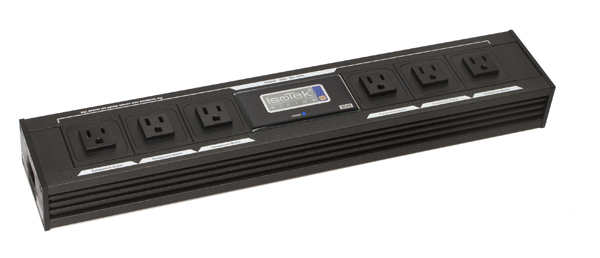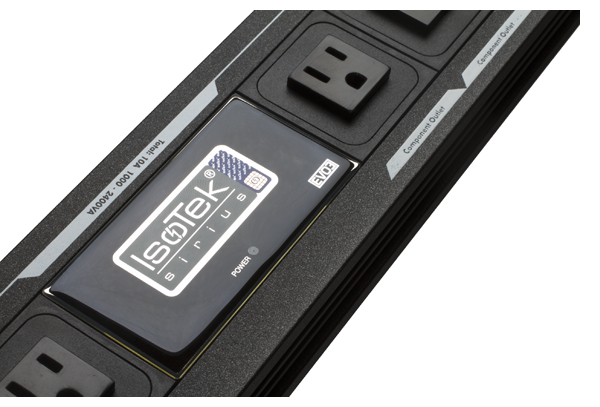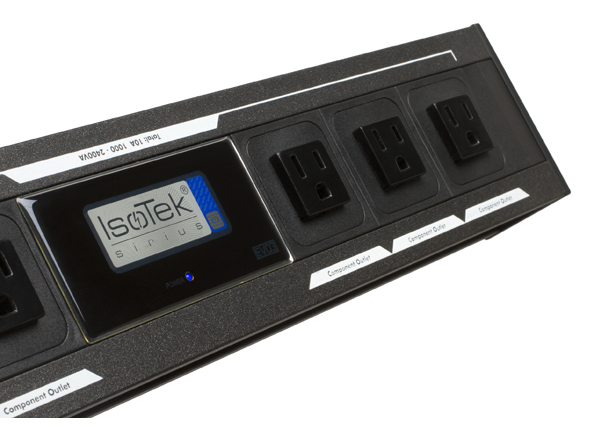IsoTek EVO 3 Sirius High-Performance Power Conditioning That Won’t Break The Bank
By Jeff Dorgay Clean power is one of the most essential parts to any hi-fi system’s success. Many audiophiles claim that they already have clean power because they are either close to a generating facility, far away from it, or have dedicated lines; I’ve heard all the reasons. And I’ve also heard the most common argument—that a well-designed power supply in an audio component doesn’t need additional help.
Clean power is one of the most essential parts to any hi-fi system’s success. Many audiophiles claim that they already have clean power because they are either close to a generating facility, far away from it, or have dedicated lines; I’ve heard all the reasons. And I’ve also heard the most common argument—that a well-designed power supply in an audio component doesn’t need additional help.
Unfortunately, if you subscribe to any of these beliefs, you are just plain wrong. I’ve had the opportunity to audition hundreds of components during the last six years and have yet to hear a single one that hasn’t benefited from proper power-line conditioning. Ah, but there’s a catch.
I’ve also had the chance to try countless power products and only found one that follows the Hippocratic oath of “doing no harm” to the signal. Often, it’s easy to mistake a lowered noise floor for transient edges being shaved off, or tonality slightly altered, thus accentuating a particular frequency range and making the conditioned sound different—but not better—overall. It’s no wonder that after a certain period of time, the system happens to sound better when plugged straight into the wall again, and the honeymoon is over.
But it doesn’t have to be that way. A good power-conditioning product should remove distortion artifacts from the AC power line, lower the noise floor, and keep its collective hands off of instrument tonality. And that’s precisely what the EVO 3 Sirius does. Following a brief listen when visiting the US importer, The Sound Organisation, I asked for a review sample. And after a few weeks of listening with various combinations, I am highly pleased with the results.
Power supply sections are some of the most obvious places where budget hi-fi components cut costs. If you lift the cover on your favorite megabucks amplifier, you will usually find a massive power transformer and banks of filter capacitors that help turn AC power into DC. But these components cost big money and large, high-quality capacitors can fetch hundreds of dollars—each. Ironically, due to their power supply limitations, least-expensive components often best respond to power conditioning. However, more often than not, a person with a $4,000 system isn’t going to invest in a $5,000 line conditioner as their next upgrade. (Actually, it wouldn’t be a bad idea.)
At $995, the IsoTek EVO 3 Sirius is a great place to start tapping clean power. It won’t break the bank, and as your system goes, you can add a second EVO 3 or one of IsoTek’s larger units. The company also carries a complete line of power cords, which provide additional gain. Yet the EVO 3 is where you want to begin. Sound Organisation president Steve Daniels encouraged me to try the power cords I had on hand and commented, “You’ll see a marked improvement no matter what mains cable you use.”
The EVO 3 uses a standard 15A IEC power cord, but IsoTek’s products are also available for 220/240-volt applications with UK and EU plugs. The model reviewed here offers six standard 110-volt outlets, all isolated from each other. Maximum current draw is rated at 10 amps, so the unit operates well with all but the largest power amplifiers.
Try This At Home, Kids
Most audiophiles like results that they can quantify and process. Here is an easy test to see if you need power conditioning (you do) and if said conditioning is actually doing anything (it should); the tools and methodology are inexpensive and simple. Procure a 50-foot extension cord and run it well away from your system into another room of your house, plugging one end into your system and the other into a common AC-powered hand drill.
First, listen to your favorite piece of music, preferably a selection with acoustic instruments and a fair amount of “air.” Now, turn the drill on and observe the effect that this has on your system’s presentation. You should hear the soundstage compress a bit and a layer of haze materialize as a result of the noisy drill motor. Finally, repeat the process with everything (including the drill) plugged into the EVO 3. Problem solved.
Eliminating noise from the line is the easy part, but the most critical aspects of power-line conditioning concern the preservation of dynamics and keeping complex tonality in check. Listening to a wide range of components, tube and solid state, it became obvious that the EVO 3 did no harm to the signal. Music sounded livelier when the components were plugged in to it rather than directly to the wall. It’s also worth noting that the EVO 3’s effect was such that it passed muster with my non-audiophile friends. All detected the same enhancements and described them in relatively the same way. No, this isn’t a mere tweak that you’ll struggle to hear.
Jesse Sykes’ Oh, My Girl provided a great workout for the EVO 3. The delicacy of Sykes’ complex and somewhat gravely voice is easy to dilute if the system is not up to speed, and with the EVO 3 removed from the system, her lead vocals (and accompanying twangy guitars) lost substantial dimensionality. While the EVO 3 worked incredibly well with the PrimaLuna Prologue Premium vacuum tube amplifier, it brought higher levels of musicality to the solid-state Emotiva combination (also reviewed in this issue) as well.
The biggest surprise occurred when plugging my dCS Paganini stack into the EVO 3, currently on a dedicated 15-amp line. Immediately, the sound became “less digital.” This characteristic was most apparent and dramatic during the playback of 128kb/sec Rhapsody files. Again, the overall presentation became more liquid and analogesque. Granted, a 128kb/sec bitstream will never sound like an LP. But with the EVO 3 in place, it was much more pleasant and far less grainy.
Plug One In
The IsoTek EVO 3 Sirius provided consistent results, regardless of the equipment used. It will lower the noise floor of your system, and improve dynamics and low-level resolution. Exactly what a power line conditioner is supposed to do. Here’s one of the best upgrades you can make. Plus, knowing that you are plugged into clean power simplifies the other aspects associated with fine-tuning. Highly recommended.
IsoTek EVO 3 Sirius
MSRP: $995 US, £299 UK
US: www.soundorg.com
Peripherals
| Analog Source | Rega P9 w/Sumiko Palo Santos cartridge |
| Digital Source | Denon 3910 Simaudio 750D Naim DAC dCS Paganini |
| Preamplifier | McIntosh C500 Emotiva USP-1 |
| Power Amplifier | Conrad Johnson MV-50C1 Emotiva UVA-1 PrimaLuna ProLogue Premium (integrated) Simaudio 600i (integrated) |
| Speakers | B&W 805D Magnepan 1.6 Klipsch Heresy III |





